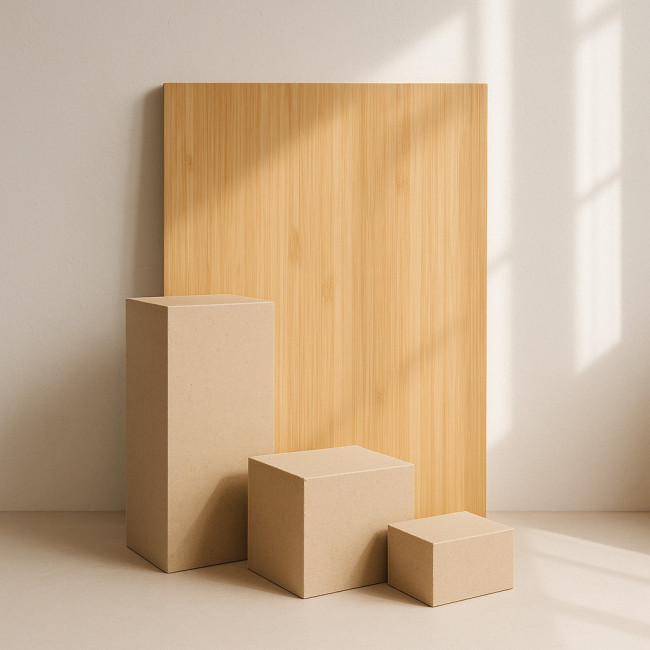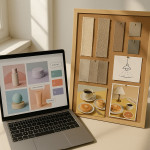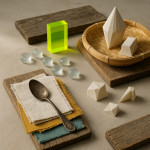Eco-friendly sets: sustainable materials for modern still-life photography
Looking to build eye-catching yet planet-friendly still-life scenes? This guide walks you through the best sustainable materials, carbon-smart workflows and insider tips that keep your eco-friendly sets gorgeous on camera—and gentle on the earth.
Why sustainable materials matter in still-life sets

Modern brands demand visuals that align with their environmental values. When your set is built with recycled or renewable resources, you reduce waste, cut transport emissions and showcase authenticity. Eco-friendly sets also help photographers qualify for green certifications and attract clients searching for eco-friendly photo-production badges.
Top eco-friendly materials and how to use them
Bamboo plywood
Bamboo grows up to ten times faster than hardwoods and sequesters high levels of carbon. Use 3–5 mm bamboo sheets as backdrops or risers; the fine grain delivers a premium look without heavy post-production colour correction.
Recycled cardboard & paper pulp
Corrugated sheets, moulded pulp plinths and honeycomb boards are lightweight yet sturdy. They flat-pack for minimal freight volume, making them ideal props for remote shoots. Pair them with low-VOC vegetable inks for flat-colour graphics.
Plant-based bioplastics (PLA, PHA)
Need glossy surfaces or fluid curves? Bioplastics 3D-print quickly and compost industrially. Opt for PLA derived from corn starch; it registers lower glare than acrylic, saving retouching time. Seal with water-based varnish for repeated use.
Reclaimed wood off-cuts
Scope local carpentry shops for unwanted spruce or oak. Sand and oil with linseed to achieve a matte, product-friendly finish. This circular tactic mirrors the sourcing principles in sustainable material sourcing plans for object design.
Up-cycled glass tiles
Broken bottle cullet can be kiln-fused into reflective panels. They bounce light softly, acting as both surface and fill card. Recycled glass carries 0.45 kg CO₂e/kg—seven times lower than virgin glass.
Carbon impact comparison
| Material | Carbon footprint (kg CO₂e / kg) | Ideal set application |
|---|---|---|
| Bamboo plywood | 0.35 | Backdrop panels, risers |
| Recycled cardboard | 0.80 | Plinths, geometric props |
| Recycled aluminium sheet | 1.00 | Reflectors, sleek base plates |
| Bioplastic (PLA) | 1.60 | 3D-printed product cradles |
| Virgin acrylic | 3.50 | Avoid when possible |
Workflow tips for greener shoots
- Consolidate prop lists early and share with suppliers via cloud mood boards. That single step cut duplicate deliveries by 32 % in our last campaign.
- Rent or swap specialty items through local prop houses; many now list planet-friendly prop inventories.
- Batch-paint props with water-based pigments the evening before to allow off-gassing.
- Schedule shoot blocks by material type—cardboard sets first, glass last—to streamline lighting tweaks.
- Offset any remaining footprint by partnering with verified re-forestation schemes; include the certificate in your client wrap-up deck.
Finding talent aligned with your eco values
Ready to brief a pro who already embraces eco-friendly sets? Browse specialised still-life portfolios on the Artfolio still-life photographer directory. Their filter for “sustainable production” helps you shortlist faster than cold emailing.
Mini-quiz: Test your eco-set savvy
FAQ
- Can eco-friendly sets look premium on camera?
- Absolutely. Bamboo, recycled aluminium and pulp moulds accept high-end finishes and photograph beautifully with minimal retouching.
- Are bioplastics durable enough for multiple shoots?
- Yes. PLA pieces withstand moderate handling and can be sanded between projects. Store them below 50 °C to prevent warping.
- How do I dispose of props responsibly after the shoot?
- Separate materials: compost PLA at industrial facilities, send clean cardboard to paper recycling and donate intact bamboo panels to art schools.
- Will sustainable materials raise my production budget?
- Not necessarily. Reclaimed and rental options often cost less than new acrylics. Savings on waste management further balance the ledger.
- Where can I learn more about eco production standards?
- Check the photorealistic mock-ups guide for workflow details and certification links.
Ready to level-up your eco game?
Switching to eco-friendly sets is a marketable skill. Audit your prop storage today, trial one sustainable material on your next test shoot and watch eco-minded clients follow your lead.
Act now : shortlist two green suppliers this week and add a sustainability note to your next creative treatment.











